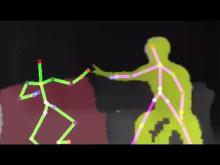Real-time Location-specific Flood Warning System
A number of DBT (prototype) project ideas exist within the following...
When a flood warning is issued in your area, how do you know whether your exact location is safe?
The UK Met Office provides free access to their web API: DataPoint which gives general weather forecast, including extreme weather event warnings. The UK Environment Agency provides free access to their real-time flood monitoring API, which gives detailed data from its flood monitoring stations. Both sources also give historical data, which could potentially be used in conjunction with the Environment Agency flood maps to estimate level of risk for any given location.
How feasible is it to estimate the likelihood of flooding at a specific location within mainland UK at any given time? How accurate might that estimate be? What apps already exist that provide some or all of these features?
If you discover that flooding or getting cut-off by flooding at your exact location is imminent, how do you know where to escape to?
It may be possible to invert the above search to find areas within a given region that are least likely to be affected by flooding.
How do you work out the best means and route of escape to a specific safe location?
A number of open source route planning web APIs are freely available to use. Open route service is one interesting example, as it provides a host of features including elevation information, which could be used as a crude input to a real-time(ish) flood map estimate. In a flood emergency, there is likely to be an increase in road traffic on (potential) routes out of flood zones. Moreover, the drivers are likely to be in heightened states, which may increase risk of traffic incidents. When planning a motor-vehicle escape route, it makes sense to also consider real-time traffic data. A number of freely available traffic web APIs are available, including TomTom. The traffic and flood data could possibly be combined to produce a list of places to avoid as input to the route planner.
How feasible is it to estimate the nearest safe locations when flooding is imminent? How feasible is it to estimate the best escape route? What apps already exist that provide some or all of these features?

